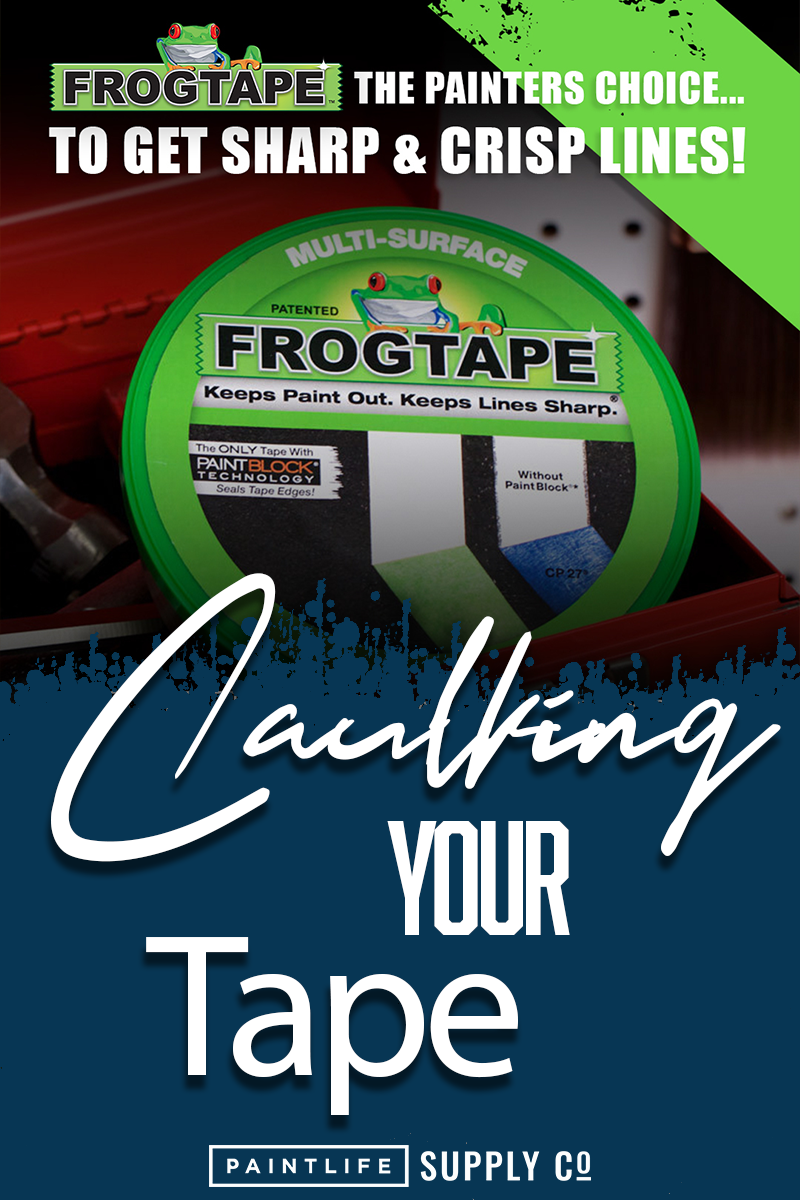
Caulking Your Tape? Mystery Solved!
How do you use caulk and tape to achieve perfect lines?
I started using this technique 20 years ago and have tremendous success with it. But, in some circles, it’s considered controversial. I’ll tell you why and then I’ll tell you how we do it.
First, a lot of pros think that if you can’t paint a straight line without tape, you probably should be doing something else. I agreed for a long time but over the years I came to realize that I can mask a job, paint it, and pull it and do it all a lot faster than I can when cutting in freehand. If you put down enough tape, you get really efficient at it and the whole job goes faster and you end up making more money. Plus, if you hire a lot of guys with zero painting experience, you can teach them how to mask, tape, and paint a super crisp line in a matter of weeks, not years.
Second, a lot of people will say you can’t paint over caulk. And, to a certain extent, they’re right.
You certainly can’t use an oil-based paint over latex caulk. For that reason, we only use this technique with latex caulk and latex paint. The best caulking option is Tower Sealants Accelerator. With Accelerator you can paint the wet caulking immediately. With Accelerator using this technique with a flat paint, it will not crack. For the most part the walls we paint are finished in a satin and this works great for that. With caulking your tape, timing is critical. In order to get a clean line, you can’t let the caulk or the paint dry. If that happens, you’ll end up with shark teeth caused by paint bridging from tape to surface.
What you want to do is apply your tape to the wall or baseboard. I use FrogTape Green whenever I am caulking my tape. FrogTape green has a polymer that swells when moisture contacts it giving you perfect lines when painting over your tape.
If you’re working alone, you probably only want to do one wall at a time to avoid the potential for drying I just mentioned. Once you have your FrogTape firmly in place, you want to put a really thin bead of caulk on the surface of the tape just along the edge to be painted. I typically use a clear caulk which is thinner than a white caulk which has colorants. But if I’m painting along a white baseboard, especially one with large gaps or cracks, you definitely want to use white caulk for both the body and the color.
Next you want to run your finger over the caulk to basically smooth it out along the seam of the tape and the wall. Only a thin residue should remain on the tape and wall. Then you simply paint over the seam with your soft filament brush. I do prefer a Premier Brooke 2.5" or Hampton when painting over my caulking. Both brushes are available and Paint Life Supply Co. You don’t want to use a lot of pressure but enough to get the paint on the surface. Once you’ve got the length of tape done, you want to immediately pull the tape. You’ll end up with a clean crisp line, even on textured walls.
The other key thing is that you want to use this technique with your second coat. So you’ll tape, roll to within a ¼” of the masked baseboard on your first coat of paint, and then you do the caulk-tape trick with your second coat on the walls. You’ll pull your FrogTape when the paint is wet. Do your caulk and tape trick, roll second coat then pull your tape in the sequence we have mastered. In order for this to work well you will need to use the right filament brush like and brush over the tape lightly. I use my Brooke brush when painting over white caulking and a Hampton when painting over clear caulking. Too much pressure will force paint under the tape. A roller has a tendency for force paint under the tape also. Always brush over your tape.
Again, not everyone’s a fan of this technique but, for me, it’s been a huge time-saver and money-maker. Visit us at Paint Life Supply Co.
Brought to you by FrogTape.

2 comments
Thanks for the tips. I like my projects to look professional, so Im always looking for tips to improve. Thanks again.
For some reason, there’s a lot of attitude surrounding this practice, whether you’re painting rooms or pictures. As such, it’s tough to get a clear answer, but I got one here and appreciate that. Finally, a search result near the top of the list actually worth clicking on!